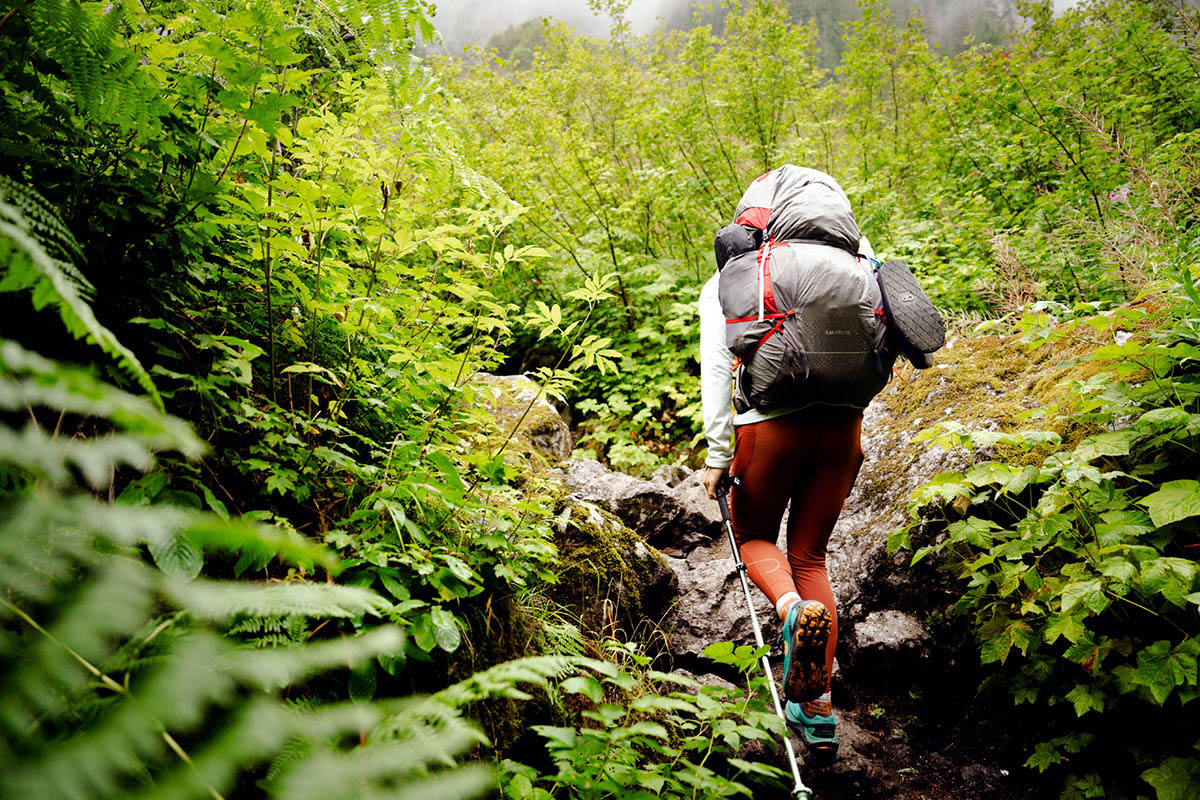
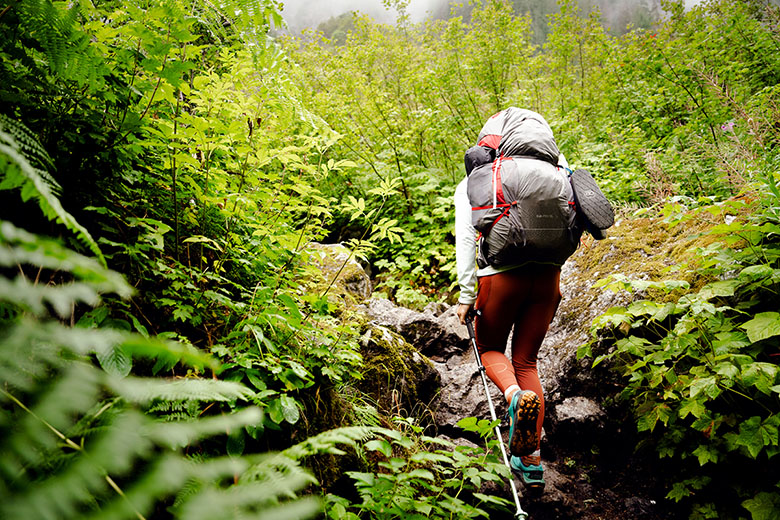
Price: $290
Weight: 1 lb. 14.8 oz. (XS/S)
Capacity: 55L
What we like: Aggressively priced for a truly ultralight design; Osprey retained the standard model’s excellent ventilation.
What we don’t: Thin fabrics and flimsy components result in subpar durability; storage layout could use some improvements.
See the Women's Osprey Eja Pro 55 See the Men's Osprey Exos Pro 55
Osprey’s women's-specific Eja is a very well-rounded ultralight design for those transitioning from a standard backpacking pack. The Eja Pro 55 here is a trimmed-down variation that takes it even further, shaving off significant weight with streamlined suspension, fewer pockets, and thinner fabrics. We recently brought the pack to Washington State for testing and enjoyed its feathery feel and suspended mesh backpanel that promotes excellent breathability. It’s clear that Osprey made some compromises—our pack suffered two tears in just as many days on the trail, and zippered storage is a little lacking—but overall, it’s a competitive addition to the UL space and cheaper than most cottage-brand alternatives. Below are my thoughts on the Eja Pro 55. To see how it stacks up to the competition, check out our articles on the best ultralight backpacks, best backpacking packs, and best women’s backpacking packs.
Coming from Osprey’s well-padded (but decidedly heavy) Aura AG, the streamlined Eja Pro 55 was a predictable step down in overall carrying comfort but still perfectly serviceable for shuttling a full load. For reference, I took the pack out of the box and into Washington’s Necklace Valley for a three-day backpacking trip, and I estimate I was shuttling around 30 pounds’ worth of gear, clothing, and food, which is the maximum amount of weight that Osprey recommends. Despite pushing the Eja’s limits, I didn’t experience any major comfort-related issues. Like the standard—and significantly heavier—Eja 58, the Pro features a sturdy internal frame, padded mesh along the harness and backpanel, and ample adjustability for dialing in a close and secure fit (more on this in “Fit and Sizing” below). 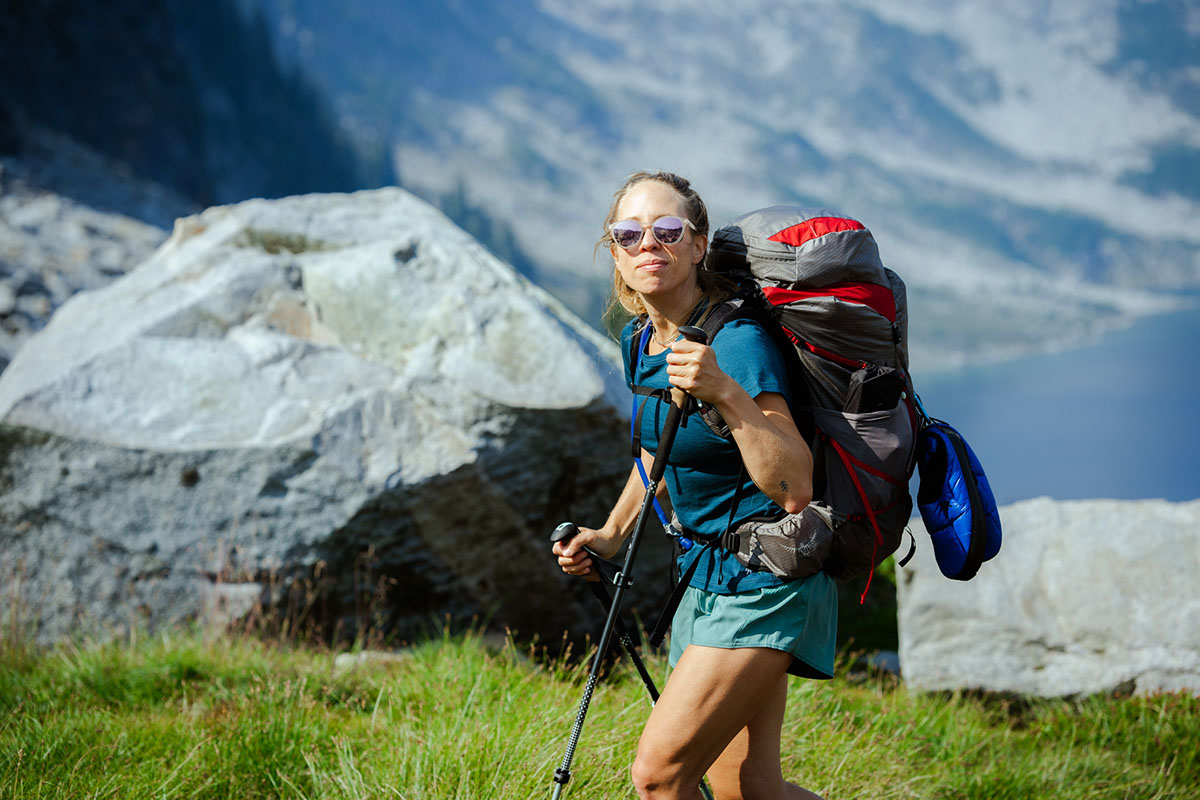
That said, it’s obvious that Osprey put a big priority on keeping weight low. The hipbelt is minimally cushioned with thin webbing to secure it (the standard Eja’s is noticeably thicker by comparison), and the shoulder straps have a similarly slim look and feel. The latter led to a sore collarbone after our first day, but the pain quickly subsided, and the pack remained comfortable throughout the rest of the trip. It does ride a little low and wide, which resulted in a slightly awkward look, but the upside is that I experienced no unwanted sway or movement when navigating tricky terrain (it’d work great with a bear canister, too). In sum, the Eja doesn’t have the plush feel of the Aura or other comfort-first packs, but it’s plenty supportive for light loads and undeniably competitive within the ultralight market.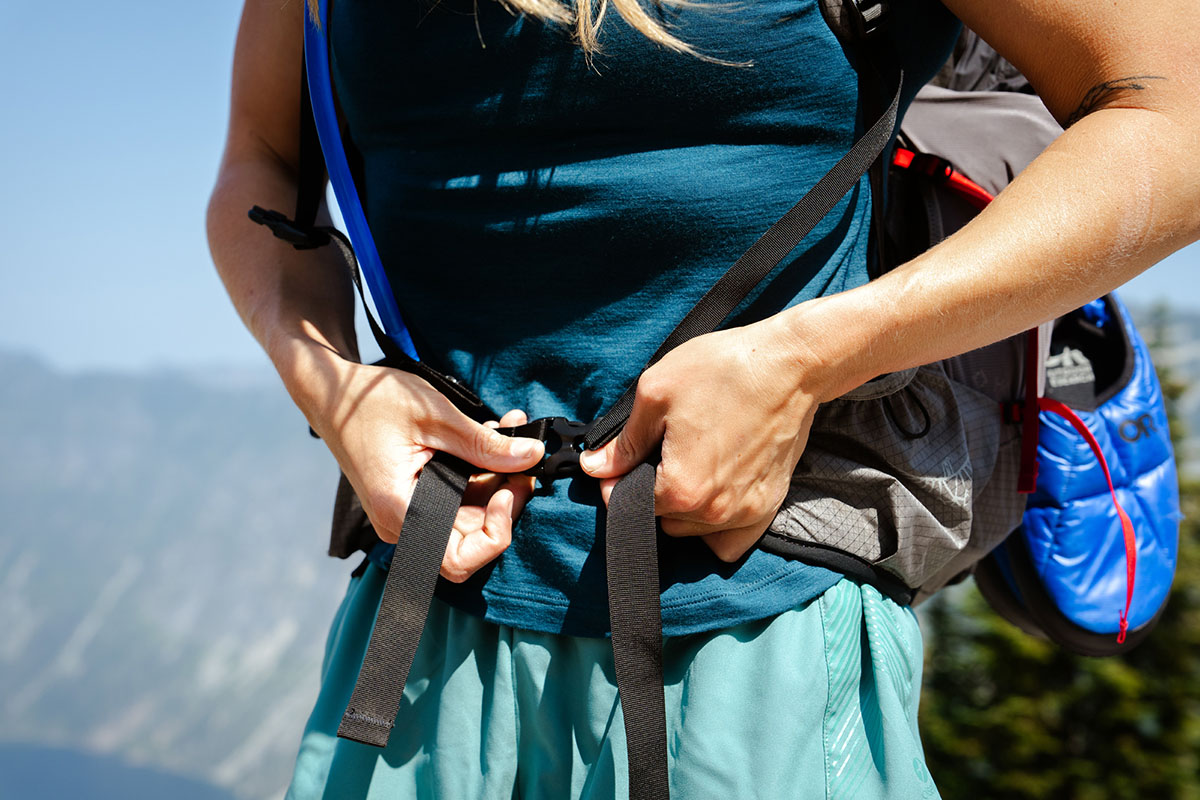
At 1 pound 14.8 ounces in a size XS/S, the Eja Pro 55 is impressively light and competitive with the likes of specialized—and much pricier—Dyneema designs. These include premium UL competitors like Hyperlite’s Southwest 55 (1 lb. 15.6 oz.) and their much smaller Unbound 40 (1 lb. 14.1 oz.). Stacked up against mainstream offerings, the Eja Pro is almost in a class of its own: The standard Eja 58 checks in considerably heavier at 2 pounds 11.5 ounces, REI’s Flash 55 weighs around the same at 2 pounds 11 ounces (2 lb. 4 oz. if you remove all of the strippable features), and Gregory’s Facet 55 is 2 pounds 8 ounces. And for the most weight-conscious of missions, you can ditch the Eja’s top lid and use the integrated “FlapJacket” to cover and protect the main compartment opening for an additional 2.6-ounce weight savings.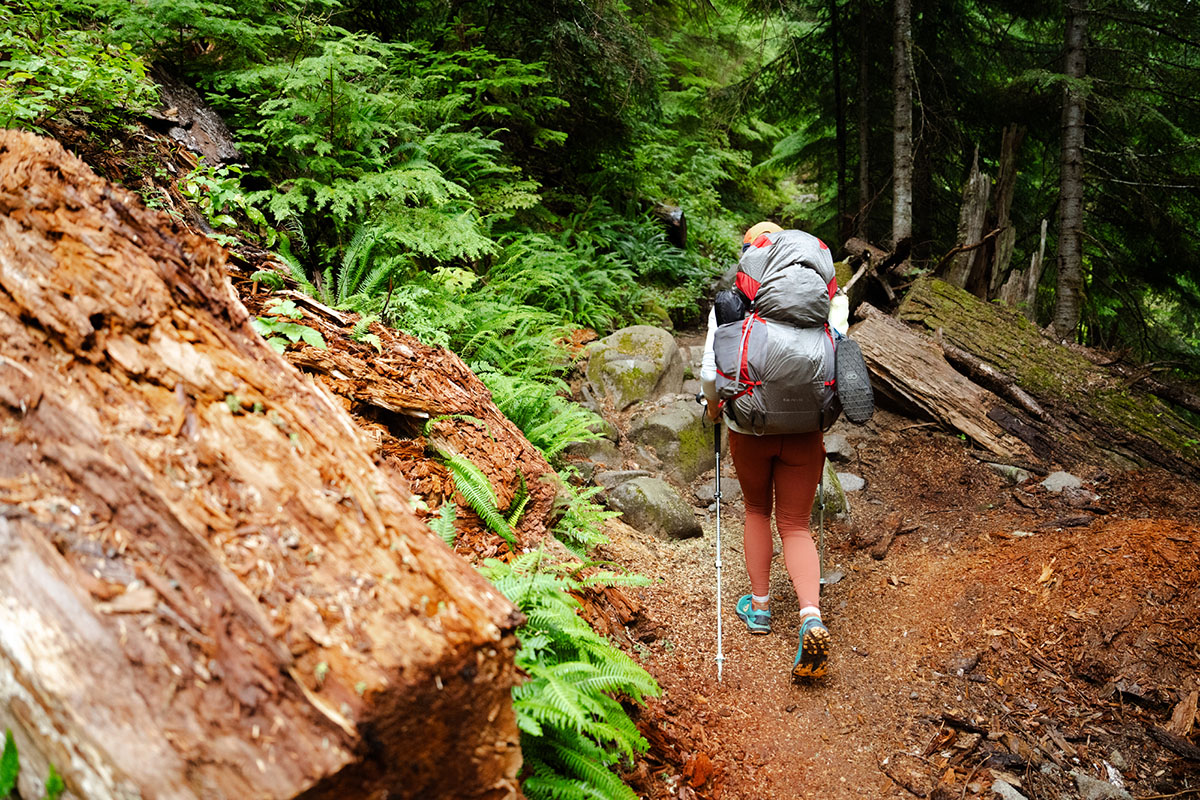
Organization is one area where it’s clear that Osprey made some sacrifices to keep things streamlined. The exterior layout includes a large mesh shove-it pocket at the front, a zippered top lid pocket, a mesh water bottle pocket at each side, and dual hipbelt pockets. The water bottle pockets are particularly well executed with dual openings (one vertical and one horizontal) for on-the-go hydration and have ample space for standard Nalgenes. I even managed to stuff an ultralight camp chair (the 1-lb. Helinox Chair Zero) in one of them with a little room to spare. For those who prefer a reservoir, there’s the standard arrangement of a hydration sleeve, hose port, and clip for suspending your bladder. The top lid pocket is also nicely sized and the only practical place to separate smaller items like toiletries, gloves, and a headlamp. I wish Osprey had retained an additional pocket on the underside of the lid—like you get with the standard Eja 58—but I understand their decision to omit it.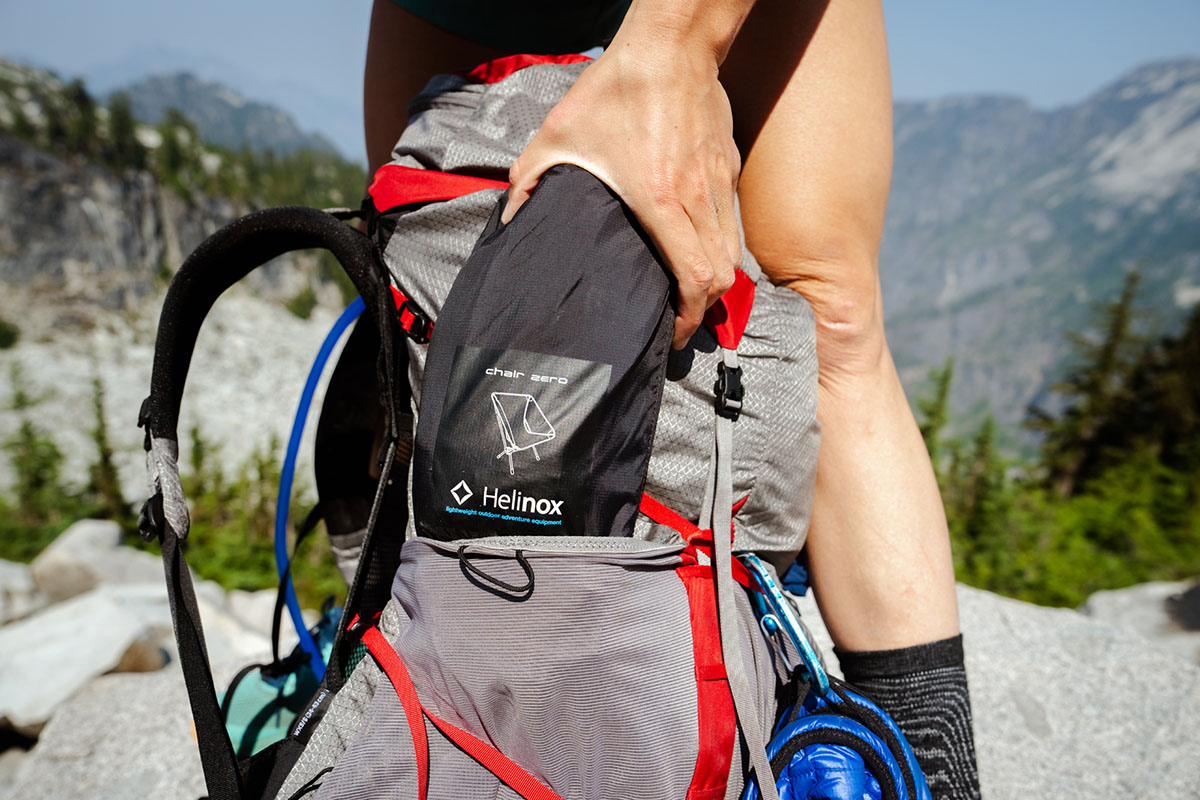
Moving on to the front mesh shove-it pocket, I found the space to be prohibitively narrow and essentially unusable with the main compartment full. Osprey did include stretch panels that allow you to expand the pocket by loosening the compression straps at the sides, but it was still noticeably taut—even when empty. In practice, I was able to cram in a bag of snacks for the day or a light layer, but nothing more. Rounding out the storage layout are two hipbelt pockets: one with a zipper and one with an elasticized opening. For reference, my smartphone barely fit in the former, and I opted not to use the latter for fear of accidentally dropping my belongings (or even a used wrapper). And for securing gear to the outside of the pack, Osprey included ample lash points and compression straps, including dedicated ice axe loops. I personally could have done with fewer straps—they got tangled frequently—but enjoyed being able to attach my dirty camp shoes.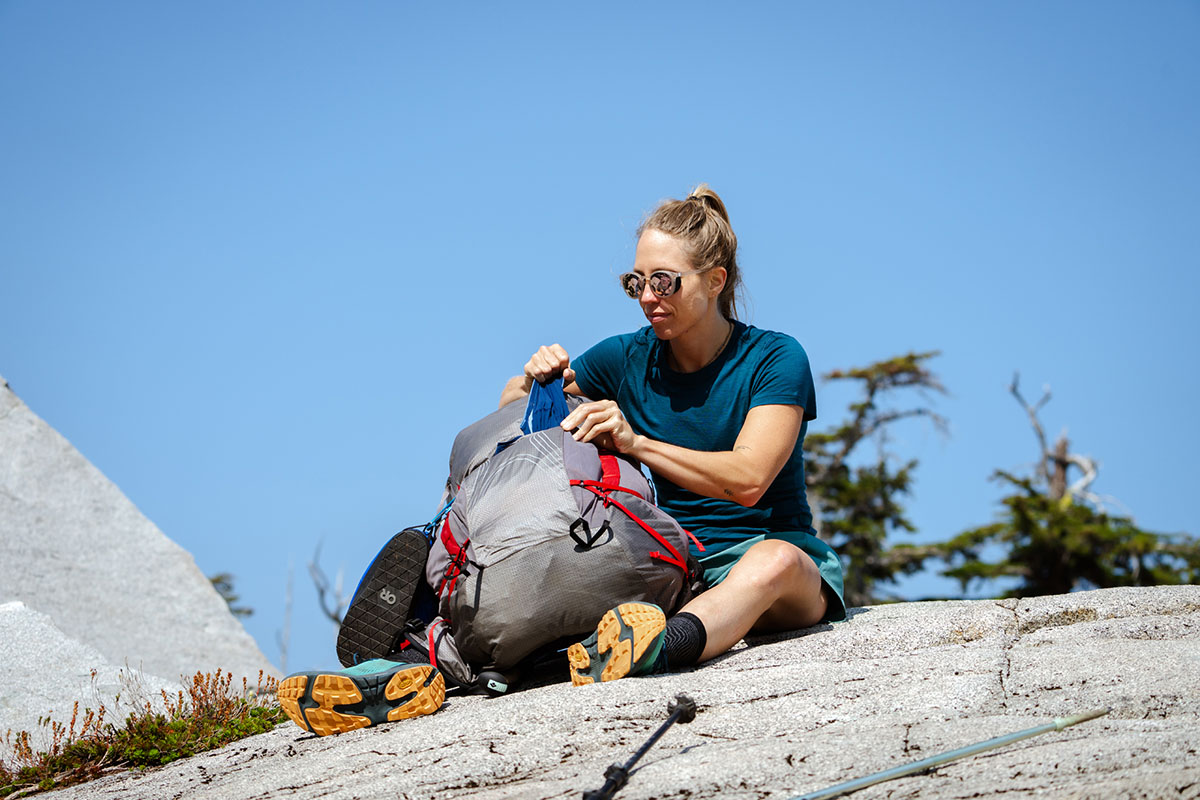
The Eja Pro 55 features Osprey’s AirSpeed backpanel, which utilizes suspended mesh to promote airflow between the pack and your back. Importantly, the mesh coverage is quite generous—from the hips all the way up to just below the top lid, including on most of the hipbelt and shoulder straps. I haven’t gotten a chance to test the pack in true summertime heat, but I had no issues on our backpacking trip with temperatures reaching into the upper 60s Fahrenheit. It was hot enough that my merino wool hiking shirt grew noticeably sweaty underneath the webbing of the hipbelt, but my back remained completely dry. By comparison, some ultralight competitors—like the Hyperlite Mountain Gear Southwest—use all-foam backpanels that are far less breathable and more prone to growing swampy on hot days. If you regularly backpack in warm weather, the Eja Pro is a standout in the market, which is impressive considering its low weight.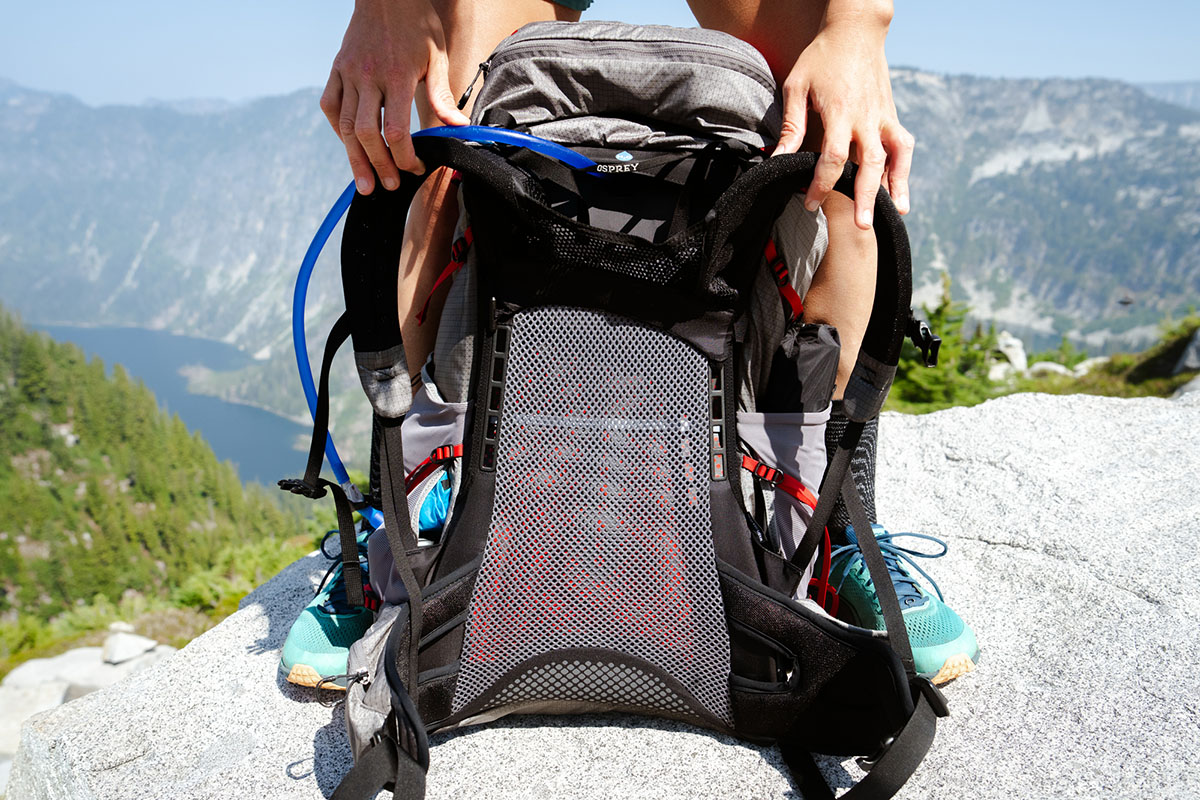
Our backpacking trip was unexpectedly wet (I didn’t even pack a rain shell until the last minute), and the Osprey Eja Pro 55 handled the conditions surprisingly well. The pack doesn’t come with a rain cover, which wasn’t a surprise given its ultralight intentions, so Osprey relied on standard durable water repellent (DWR) coatings on the body and bottom. I was initially concerned that this wouldn’t be sufficient for fending off the extended rainfall we experienced on our first day, but I was happy to find all my belongings perfectly dry when we arrived at camp. I had preemptively stuffed my clothes and sleeping bag in waterproof stuff sacks, but no moisture made its way through the Eja’s outer fabric despite the exterior appearing very dark and saturated. I’m not sure the pack could have handled much more before wetting out, but it showed no signs of weakness in light to moderate moisture. And a final note: If you remove the lid, the FlapJacket cover mentioned above secures with buckles to keep the main compartment protected.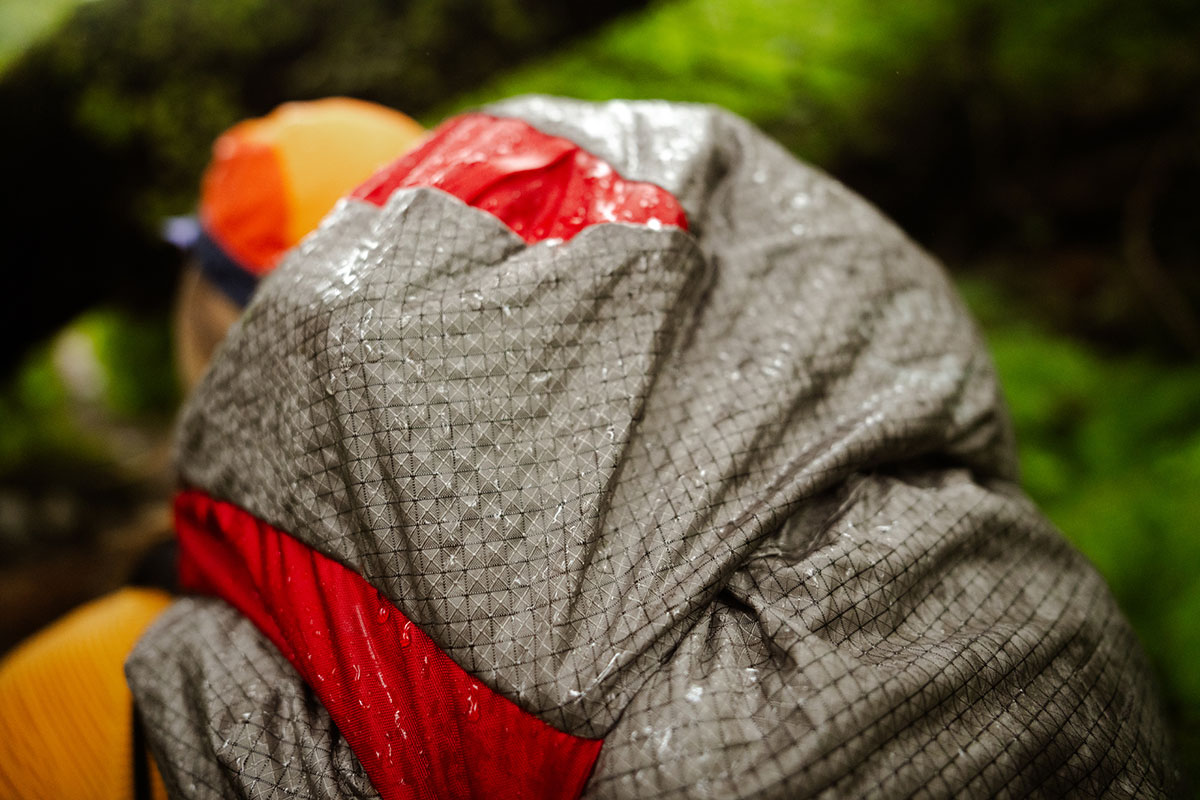
Ultralight gear isn’t often lauded for its durability, and the Osprey Eja Pro 55 is no exception. In terms of construction, the Eja uses Osprey’s “NanoFly” fabric, which is a mix of 100-denier (D) nylon and 200D UHMWPE (short for ultra-high-molecular-weight polyethylene) ripstop. This puts the pack on the thinner end of the spectrum, and the smaller components (like the buckles and clips) have a similarly flimsy feel. I also found the hipbelt and load lifter straps prone to loosening throughout the day and accumulated two tears after just as many days of hiking: one on a water bottle pocket and one on the zippered hipbelt pocket. In the end, these experiences confirmed my initial impressions: The Eja is an unapologetically streamlined design that’s not built to withstand significant use and abuse. Thru-hikers and other minimalists might not mind this trade-off for the reduction in weight, but I personally feel Osprey went a little too far.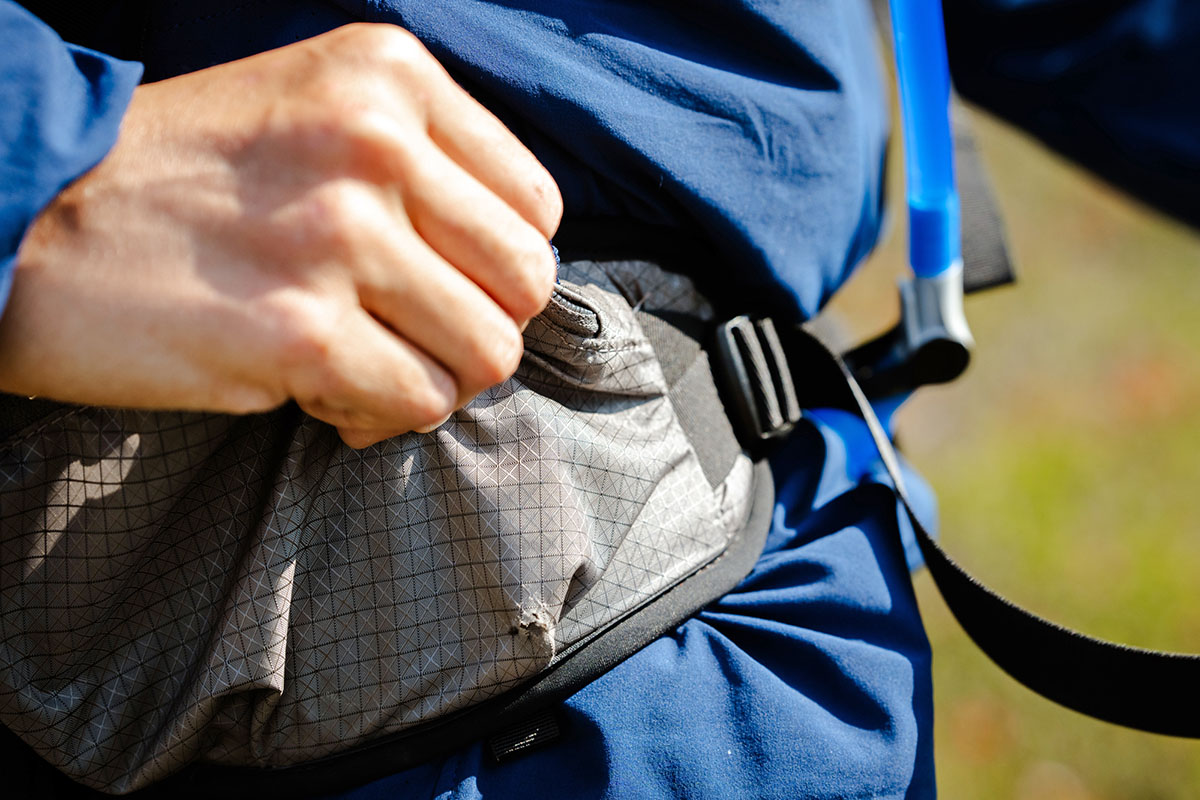
I ordered a size XS/S in the Eja Pro 55 and was happy with the overall fit. For reference, I have a 16-inch torso length, which is right in the middle of Osprey’s range (14-17 in.) for that size (the M/L will fit torsos from 16 to 20 in.). Adjusting the length is fairly easy—and a relatively uncommon feature among ultralight backpacks: There’s a ladder along the sides of the backpanel with a small rubber bar at either side that can be moved up or down by rotating until it releases and reinserting it in the proper “rung.” While fairly intuitive, however, it’s not the most secure system—I had to reconnect the bars more than once after putting my pack down and realizing they had come loose. It was a quick and easy fix each time, but there’s a chance that the pack could end up very unwieldy if one bar were to suddenly pop out while hiking. As I touched on above, the hipbelt and load lifter straps are also prone to loosening, but a simple tug every so often helped minimize potential support and weight distribution issues. 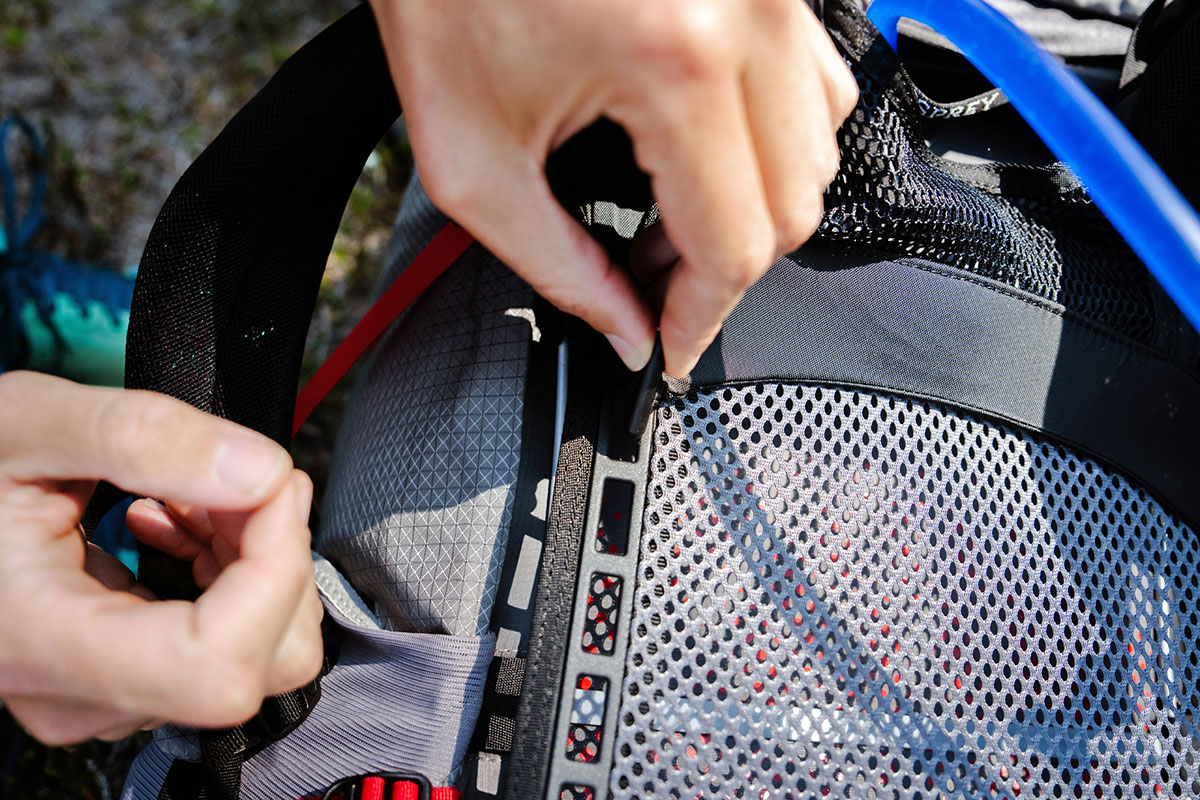
Osprey employed PFAS-free DWR coatings on the Eja Pro 55, which are made without the use of per- and polyfluoroalkyl substances. These man-made chemicals don’t readily break down over time, which can have long-lasting implications on human health and the environment. While highly resistant to water (hence their application in DWR coatings), PFAS are being phased out of the outdoor industry due to their known risks. Workers will reap most of the initial benefits due to their frequent exposure to chemicals during production, but environmentally minded consumers can do their part by shopping for gear that’s made without PFAS.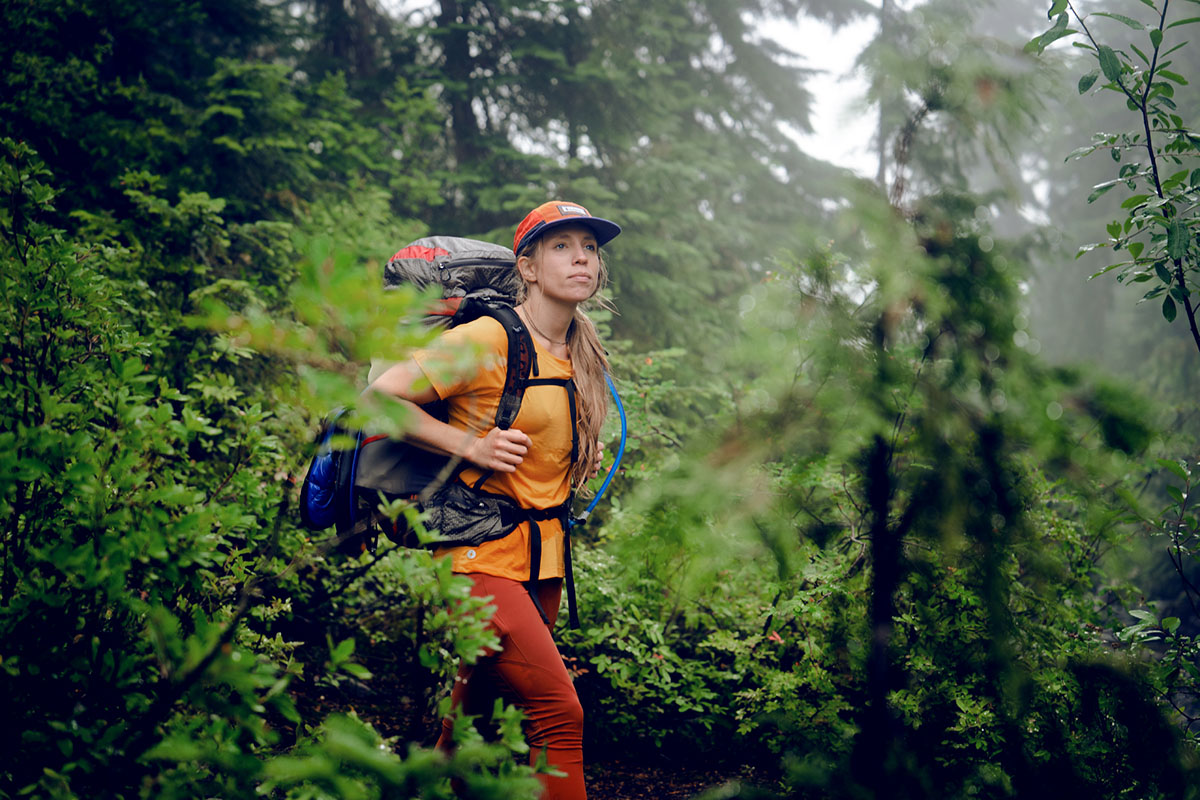
I put the women’s Eja Pro 55 through its paces for this review, and the men’s counterpart is the Exos Pro 55. Stacked up against the Eja, the Exos costs the same at $290 but is a little heavier at 2 pounds 1.2 ounces (for a size S/M), has a slightly different fit, and features blue accents rather than red. Both packs are also available in standard versions—38, 48, or 58 liters—that weigh more than the Pro models but offer better durability, carrying comfort, and organization. We cover the key differences between the Eja Pro 55 and standard Eja 58 below.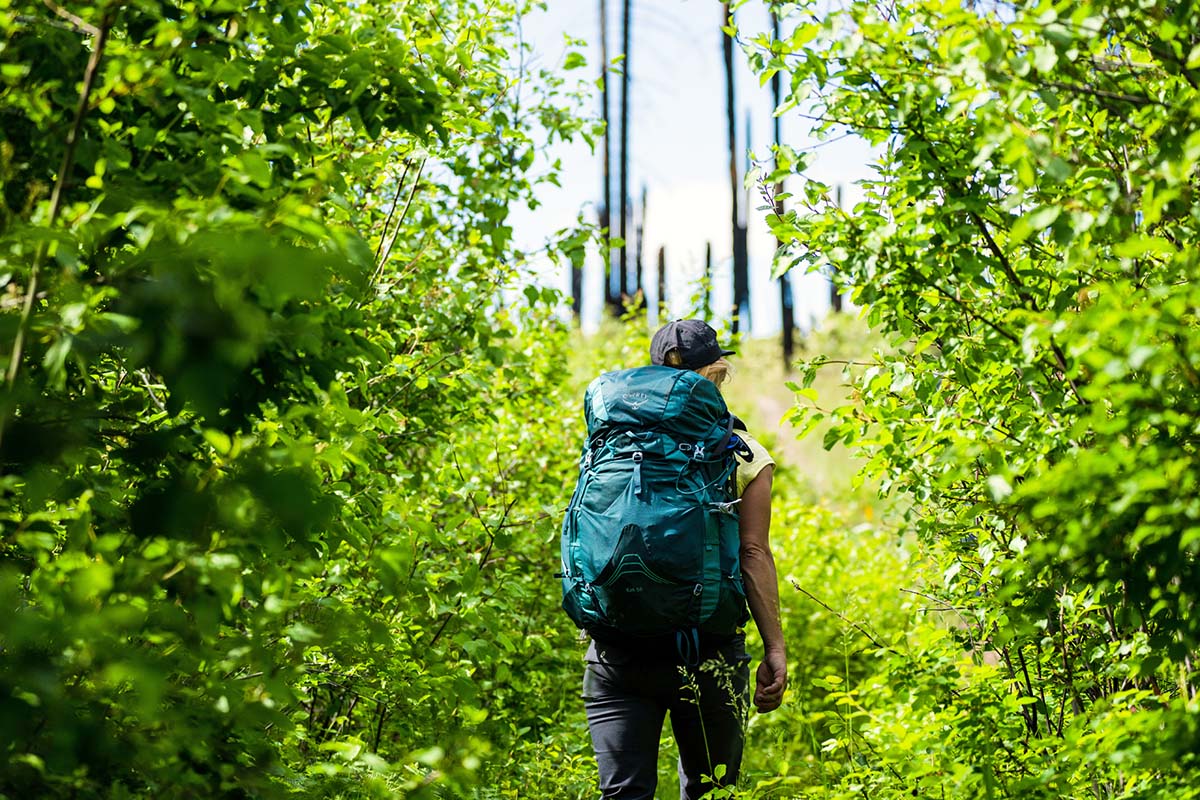
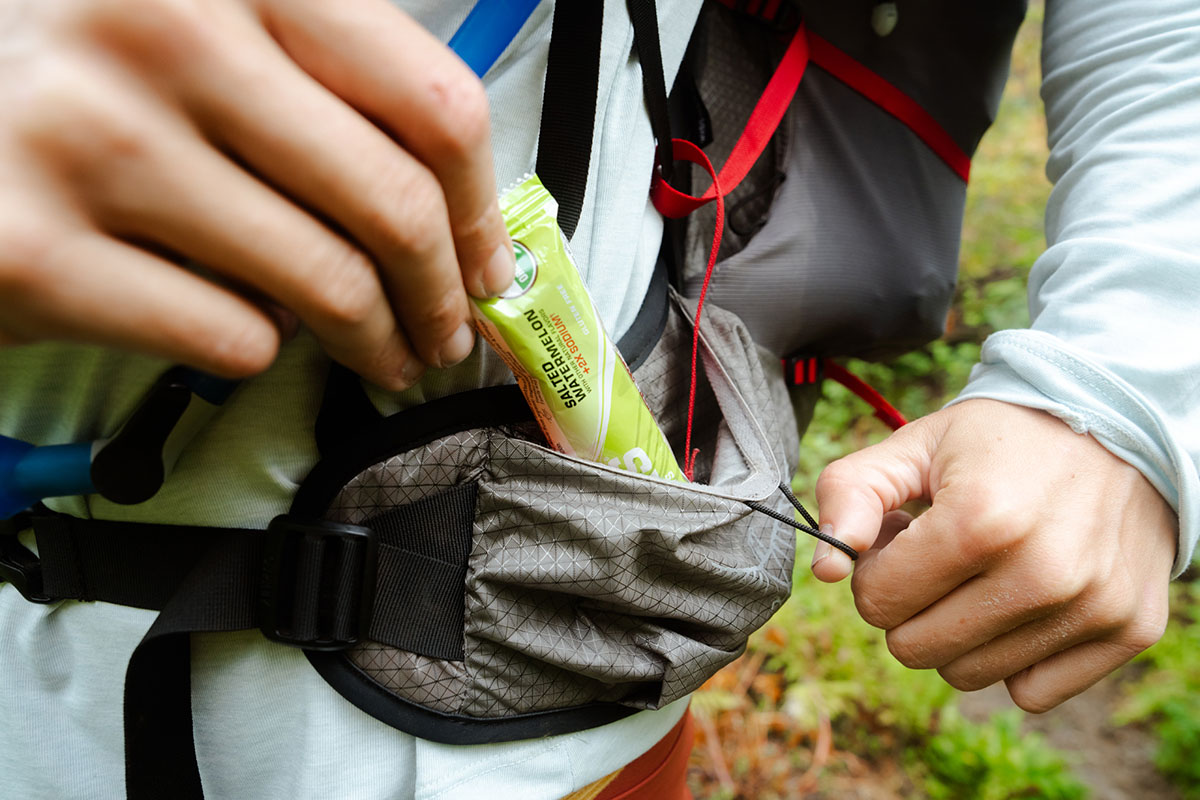
| Pack | Price | Weight | Fabric | Capacities | Load Limit |
|---|---|---|---|---|---|
| Osprey Eja Pro 55 | $290 | 1 lb. 14.8 oz. | Nylon (100D) & UHMWPE (200D) | 55L | 30 lb. |
| Osprey Eja 58 | $260 | 2 lb. 11.5 oz. | Nylon (100D & 400D) | 38, 48, 58L | 30-35 lb. |
| Hyperlite Southwest 55 | $379 | 1 lb. 15.6 oz. | Dyneema (50D & 150D) | 40, 55, 70L | 40 lb. |
| REI Co-op Flash 55 | $199 | 2 lb. 11 oz. | Nylon (100D & 210D) | 55L | 30 lb. |
| Gossamer Gear Mariposa 60 | $285 | 1 lb. 12.6 oz. | Robic nylon (100D & 200D) | 60L | 35 lb. |
The Eja Pro 55 is a competitive addition to the ultralight backpack market, but those coming from standard backpacking packs will likely find it overly compromised. Enter Osprey’s own Eja 58, which is heavier than the Pro version at 2 pounds 11.5 ounces (for a size XS/S) but comes with several upgrades. These include a higher load range (30 to 35 lb.), a noticeably thicker fabric on the base, a pocket on the underside of the lid, and dual zippered hipbelt pockets (one of the Pro’s hipbelt pockets uses a simple—and far less secure—elastic closure). The standard Eja is also $30 cheaper while offering an additional 3 liters of capacity (for more, see our in-depth Eja 58 review). In other words, it solves most of the problems we had with the Pro, although the weight penalty is substantial. Casual backpackers dipping their toes in the UL space likely won’t mind, but thru-hikers and other ounce-counters will likely prefer the Eja Pro. 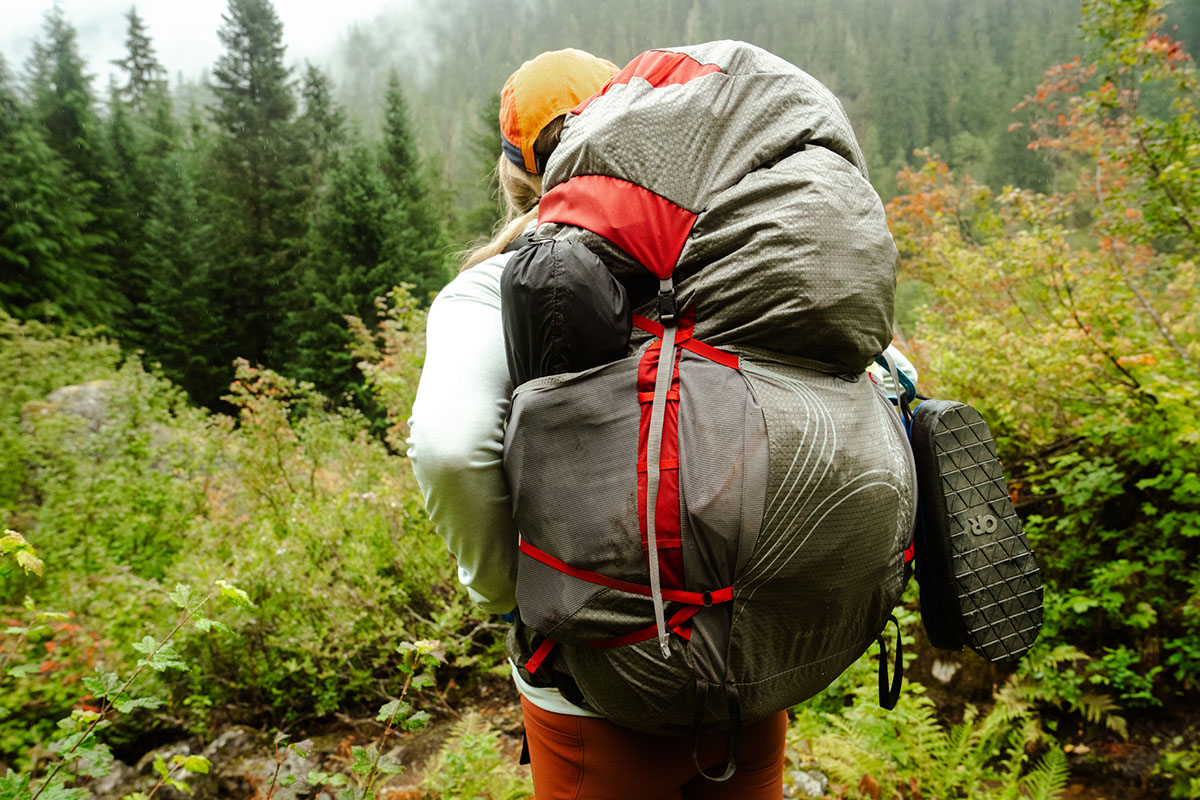
Our top-rated ultralight pack this season is Hyperlite Mountain Gear’s Southwest 55. Built with ultralight but tough Dyneema, the Southwest checks in around the same weight as the Eja Pro while offering considerably better durability (alongside full waterproofing). And comfort-wise, the Southwest’s aluminum stays, foam backpanel, and wide and supportive hipbelt add up to a noticeable boost in support and cushioning (the Hyperlite is rated to 40 lb. compared to 30 for the Eja). However, like most specialized Dyneema designs, the Southwest doesn’t come cheap at $379 and is decidedly limited on storage—including no lid. It’s also lacking in breathability due to the all-foam backpanel. In the end, the Eja is the more approachable option for those coming from traditional backpacking packs, but the Southwest is a staple in the thru-hiking community and hard to beat for minimalists familiar with UL gear.
Transitioning back to the mainstream, REI Co-op’s Flash 55 is another aggressively priced ultralight design to have on your radar. For around $90 less than the Eja Pro, the Flash comes far better equipped in the features department, including generous exterior storage and several removable features—the compression straps, two hipbelt pockets, and the shoulder strap pocket—to shave off 7 ounces. The REI is no featherweight at 2 pounds 11 ounces, but the streamlined weight (2 lb. 4 oz.) isn’t too far off from the Eja Pro. Like the Osprey, the Flash also boasts an adjustable torso length and a removable top lid, the latter of which doubles as a waist pack for quick outings from camp. The biggest downside is breathability: The Eja’s suspended mesh backpanel is a sizable upgrade in ventilation over the REI’s foam-heavy design. Apart from that, however, the Flash doesn’t make too many notable compromises, earning it our endorsement over the Osprey.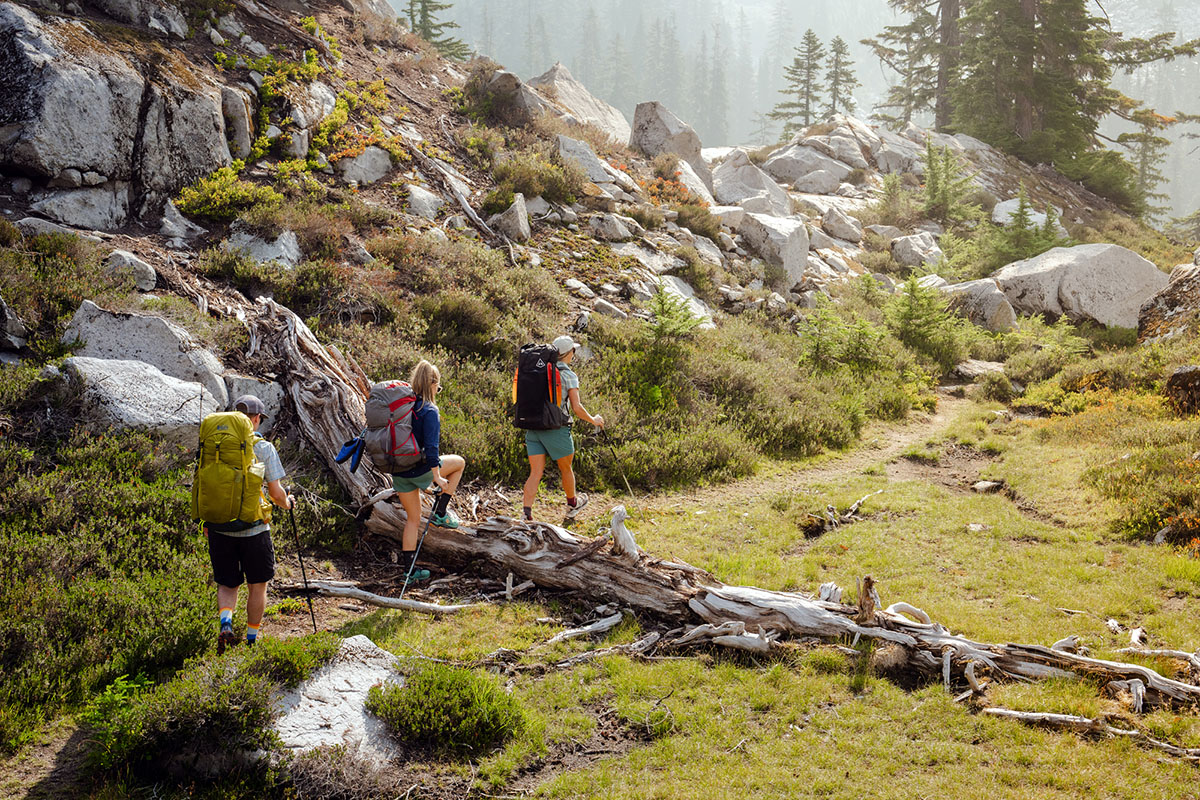
A final thru-hiking-friendly option to consider is Gossamer Gear’s Mariposa 60. Unlike the Hyperlite Southwest above, the Mariposa uses tough Robic nylon (rather than pricey Dyneema) to keep weight and cost in check. As a result, the Mariposa is both competitively light (1 lb. 12.6 oz. in a size small with a small hipbelt) and reasonably priced at $285. And it doesn’t skimp on features: You get a total of seven external pockets, a removable foam stay that doubles as a sit pad, and three size choices with separate hipbelt sizing to really dial in fit (although no torso adjustability). Again, the Eja gets the clear edge in ventilation with its hanging mesh backpanel, but the Mariposa can carry a little more weight (it’s rated to 35 lb.) and is far better equipped to distribute and organize gear. For $5 less, we consider the latter to be the better-balanced UL design—with an additional 5 liters of capacity to boot.